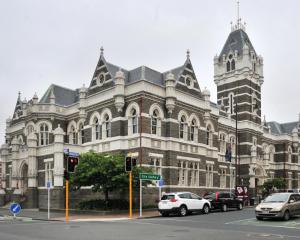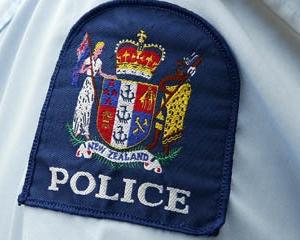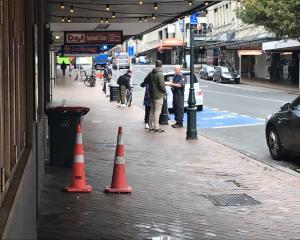
However, Dr Martin Sage said the evidence from his autopsy did not indicate whether 66-year-old Alan James Fahey died primarily as a result of the attack or because of his pre-existing medical conditions.
Jason Karl Blackler (48) - the victim's flatmate - is on trial before the High Court at Dunedin.
The Crown says the pair had a heavy drinking session on October 25, 2016, before Mr Fahey allegedly made sexually inappropriate comments about his friend's terminally ill sister.
It is alleged Blackler reacted by attacking the victim and leaving him face down on the floor of the lounge, where he was found dead by paramedics the next morning.
Dr Sage, a veteran of nearly 10,000 autopsies, described Mr Fahey's appearance - his "exuberant" grey beard, stringy shoulder-length hair, "extensive poor-quality tattoos" and an earring in his left earlobe.
His examination of the body found almost all the injuries concentrated around the face and throat.
Dr Sage noted a large splitting laceration on the top lip, extending to the base of the nose, fractures of the nasal bones and a splitting tear to the right of nose, swelling and bruising to both eye sockets and extensive bruising inside the mouth.
He counted six blows in all.
"This cannot be a result of falling over, landing on the flat floor," Dr Sage said.
He also discovered a fracture to the hyoid bone above the Adam's apple.
Aside from the injuries believed to have been sustained that night, the pathologist noted lung disease from long-term smoking and severe heart problems.
There was no clear evidence of a heart attack, but sudden cardiac death seldom left any signs, Dr Sage said.
"I can't tell you and that's just how things are," he said.
Dr Sage told the jury yesterday there was no evidence on Mr Fahey's neck of ligature marks or finger marks consistent with strangulation.
The Crown prosecutor pointed to a piece of black material at the scene by the body.
"If you had that round somebody's throat, could it work as a ligature? Yes, sure," Dr Sage said.
He said it might not leave marks but he would not expect that to leave someone with a fractured hyoid.
The witness also spoke about a "carotid hold" used in judo which was also employed by paramilitary, overseas police and bouncers to disable people.
"If you do it properly, the person you are squeezing will black out in five to eight seconds ... it's a very effective way of controlling people," Dr Sage said.
If the hold remained in place for a couple of minutes, the victim could die without any internal or external evidence left, he told the court.
But he could not peg that as the likely cause of death.
The question that should be asked, Dr Sage said, was not "Why did he die?" but "Why did he die now?"
The issue for the jury to unravel was whether the blows inflicted on the night caused death or whether the dominant factor was the pre-existing health complaints.
Earlier, the jury heard from Constable Rhys Davidson who helped arrest Blackler in Moray Pl on October 26.
While awaiting interview at the station, the defendant allegedly told him he wanted to speak to his girlfriend because "he would be doing 10 years".
Despite a bank teller claiming Blackler told her he had beaten someone to death, he told the officer minutes later he could not recall anything after arguing with Mr Fahey the night before.
Const Davidson said he noticed the defendant's right hand was swollen on the day of arrest but when he was invited to step out of the witness box and inspect them again yesterday, he accepted the swelling might have been part of a permanent condition.
The trial continues.











